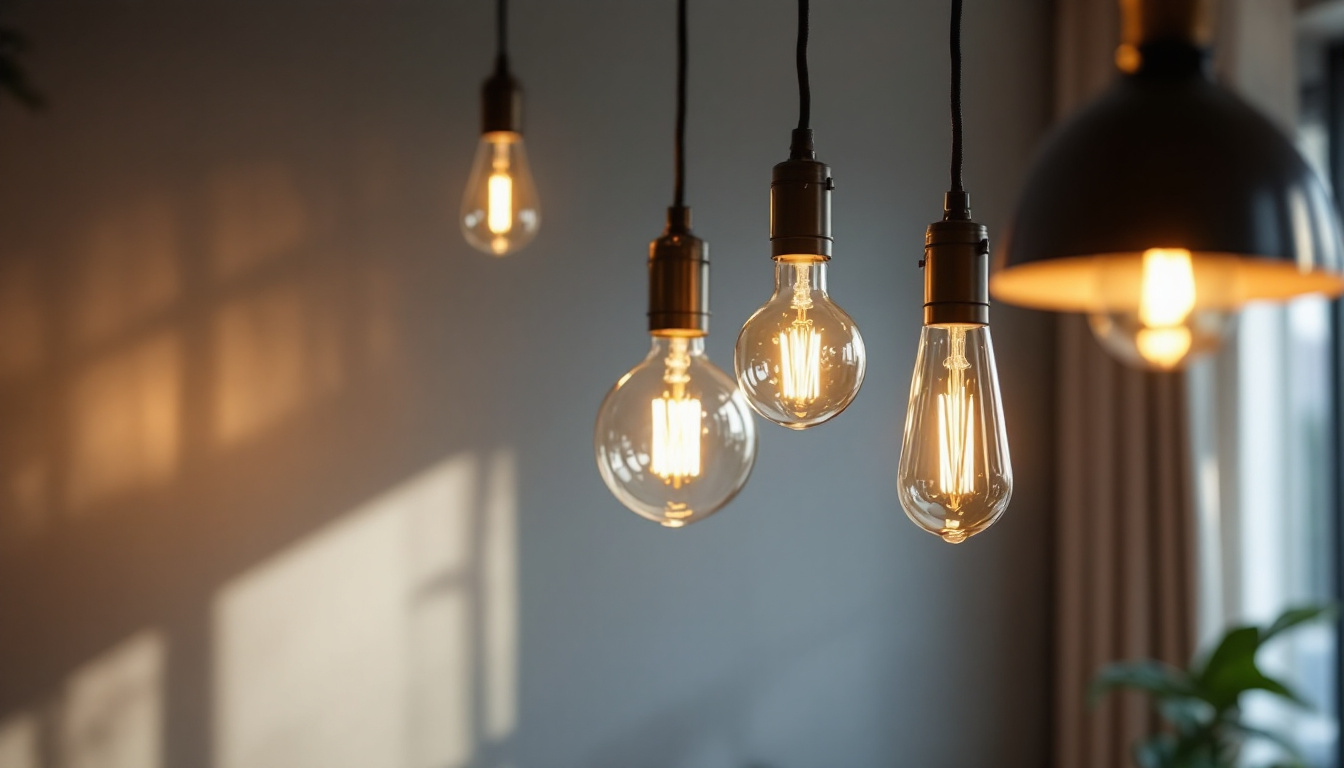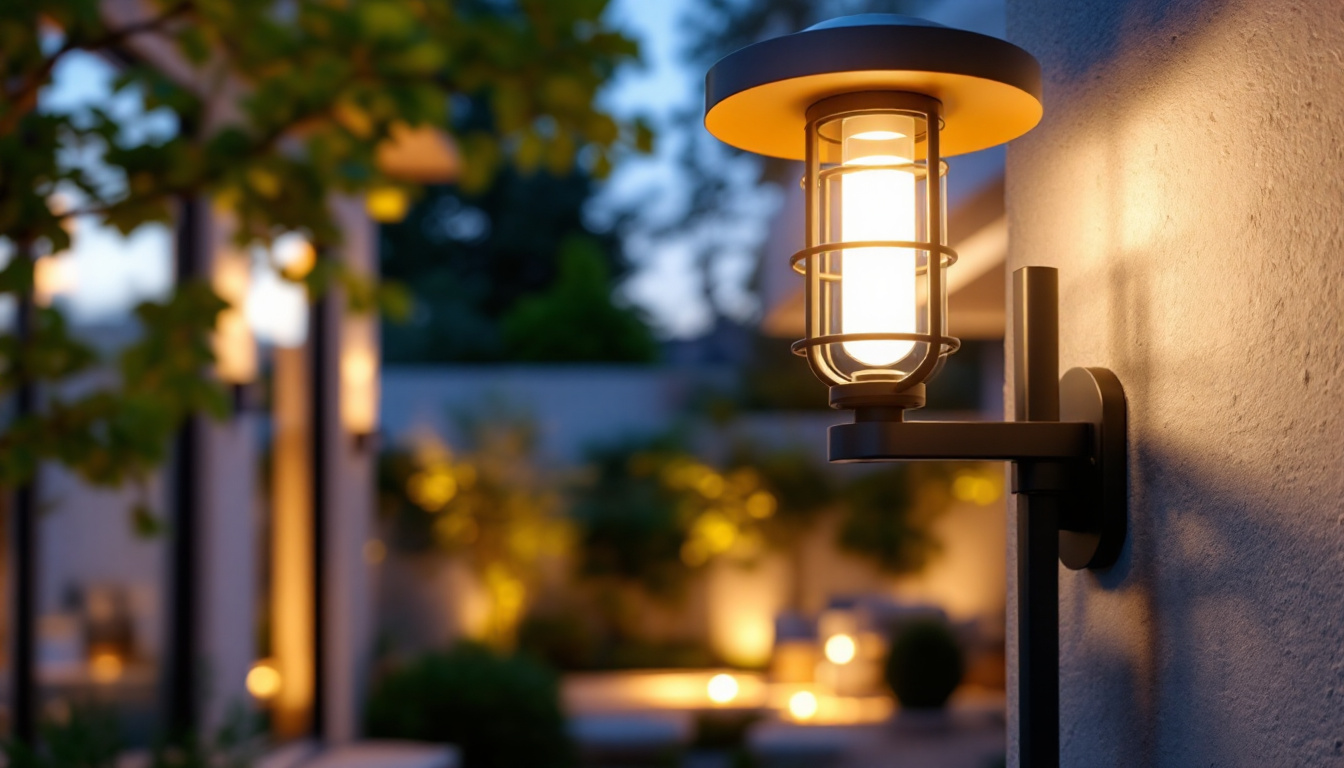
Creating the perfect ambiance in a dining room is an art that involves a careful selection of lighting. For lighting contractors, understanding the nuances of hanging lights can elevate their projects and satisfy clients’ desires for both functionality and aesthetic appeal. This article delves into the intricacies of choosing, installing, and mastering hanging lights in dining rooms, providing valuable insights for lighting professionals.
Lighting plays a pivotal role in the dining experience. It sets the mood, enhances the decor, and can even influence the appetite of diners. For lighting contractors, recognizing the significance of lighting in dining areas is essential for delivering projects that resonate with clients.
Different dining occasions require different atmospheres. A casual family dinner may call for warm, inviting light, while a formal gathering might benefit from brighter, more focused lighting. Understanding how to manipulate light levels and colors can help contractors create the desired ambiance, making the dining experience memorable. For instance, dimmable fixtures allow for flexibility, enabling diners to adjust the brightness according to the time of day or the nature of the event. Additionally, the use of color temperature can evoke specific feelings; warmer tones can create a cozy and intimate environment, while cooler tones can impart a more modern and sophisticated vibe.
Hanging lights can serve as focal points in a dining room. They can highlight architectural features, artwork, or even the dining table itself. Contractors should consider how the chosen fixtures can complement or contrast with existing design elements, enhancing the overall aesthetic of the space. Moreover, strategically placed lighting can draw attention to unique textures or materials used in the dining area, such as a beautifully crafted wooden table or an intricate wall design. Layering different types of lighting—ambient, task, and accent—can further enrich the visual experience, allowing for a dynamic interplay of light and shadow that brings the room to life.
Beyond aesthetics, functional lighting is crucial in dining spaces. proper illumination ensures that diners can see their meals clearly, which is particularly important for intricate dishes or when reading menus. Task lighting, such as pendant lights over the dining table, provides focused illumination for eating and conversation, while softer ambient lighting can fill the room without causing glare. Furthermore, incorporating smart lighting solutions can offer convenience and adaptability, allowing users to adjust settings with ease. For example, integrating motion sensors or remote controls can enhance the dining experience by allowing diners to change the lighting without leaving their seats, ensuring that the atmosphere remains just right throughout the meal.
There are various types of hanging lights that can be used in dining rooms, each with its unique characteristics and applications. Familiarity with these options allows contractors to make informed recommendations to their clients.
Pendant lights are versatile fixtures that come in various styles, shapes, and sizes. They can be used alone or in groups, depending on the size of the dining table and the desired effect. For larger tables, multiple pendants can create a dramatic effect, while a single pendant can provide a more intimate feel for smaller spaces. These lights can also be customized with different shades and finishes, allowing homeowners to match them perfectly with their existing decor. Whether opting for a sleek metal finish or a warm, rustic wood design, pendant lights can enhance the overall ambiance of the dining area.
Chandeliers are a classic choice for dining rooms, often associated with elegance and sophistication. They can range from ornate designs with crystals to minimalist styles that offer a modern touch. When selecting a chandelier, contractors should consider the scale of the room and the height of the ceiling to ensure proper proportion and functionality. Additionally, chandeliers can serve as a statement piece, drawing the eye upward and adding visual interest to the space. Many modern chandeliers now incorporate energy-efficient LED bulbs, providing both beauty and sustainability, making them an excellent choice for eco-conscious homeowners.
Multi-light fixtures combine the benefits of both pendant lights and chandeliers, offering a unique blend of style and functionality. These fixtures often feature several light sources that can be adjusted for brightness and direction, making them ideal for dining rooms where flexibility is key. They can be designed in a variety of configurations, from linear arrangements that align perfectly above long dining tables to more whimsical designs that create a playful atmosphere. Furthermore, multi-light fixtures can be equipped with dimmers, allowing for easy transitions from bright, lively dinners to softer, more relaxed settings for post-meal conversations. This adaptability makes them a popular choice for homeowners who frequently entertain guests or enjoy hosting dinner parties.
Selecting the right hanging lights involves various considerations that can impact both the aesthetics and functionality of the dining room. Lighting contractors must assess these factors to provide the best solutions for their clients.
The height of the ceiling plays a crucial role in determining the type of hanging light fixture to use. For standard ceilings, a pendant light or chandelier can be hung at a comfortable height, usually around 30 to 36 inches above the dining table. In contrast, higher ceilings may require longer fixtures or additional lighting to fill the vertical space effectively.
The size and layout of the dining room significantly influence the choice of hanging lights. In larger spaces, multiple fixtures may be necessary to provide adequate illumination, while smaller rooms may benefit from a single, statement piece. Additionally, the layout should be considered to ensure that the light does not obstruct views or movement.
The style of the hanging lights should align with the overall decor of the dining room. Whether the space is traditional, modern, or eclectic, the chosen fixtures should complement the existing design elements. Contractors should encourage clients to consider materials, colors, and shapes that resonate with their personal style.
Proper installation is crucial for ensuring that hanging lights function effectively and safely. Lighting contractors should adhere to best practices to achieve optimal results.
Before installation, it is essential to assess the electrical capacity of the existing wiring. Contractors should ensure that the circuit can handle the wattage of the new fixtures. Additionally, using dimmer switches can enhance the flexibility of the lighting, allowing for adjustments based on the occasion.
Determining the correct height for hanging lights is vital for both aesthetics and functionality. As mentioned earlier, a standard height of 30 to 36 inches above the dining table is recommended. However, this can vary based on the specific design of the fixture and the overall height of the room. Ensuring that the fixture is centered over the table is also crucial for visual harmony.
Safety should be a top priority when installing hanging lights. Contractors must ensure that fixtures are securely mounted to prevent accidents. Using appropriate hardware and following manufacturer guidelines can help achieve a safe and stable installation.
Staying updated with the latest trends can help lighting contractors offer innovative solutions to their clients. Understanding current preferences can enhance the appeal of the dining room lighting projects.
Smart lighting is becoming increasingly popular in residential settings, allowing homeowners to control their lighting through apps or voice commands. Integrating smart lighting solutions into dining room designs can enhance convenience and energy efficiency, making it an attractive option for tech-savvy clients.
Combining different materials in lighting fixtures is a trend that adds depth and character to dining spaces. For example, a fixture that features metal and wood can create a rustic yet modern look. Contractors should encourage clients to explore mixed materials to achieve a unique aesthetic.
Incorporating bold, statement-making fixtures is a trend that can transform a dining room. Oversized chandeliers or unique pendant designs can serve as conversation starters and focal points. Lighting contractors should be prepared to recommend standout pieces that align with the client’s vision.
Once the hanging lights are installed, proper maintenance is essential to keep them looking their best and functioning effectively. Lighting contractors can provide valuable guidance to clients on how to care for their fixtures.
Dust and grime can accumulate on light fixtures over time, diminishing their brightness and appeal. Regular cleaning is necessary to maintain their appearance. Contractors should advise clients on the best cleaning methods based on the materials used in the fixtures.
Clients should be informed about the types of bulbs used in their hanging lights and when to replace them. LED bulbs, for example, have a longer lifespan than traditional incandescent bulbs, but they still require occasional replacement. Providing clients with a schedule for bulb replacement can help ensure consistent lighting quality.
Routine inspections of hanging lights can help identify any potential issues before they become significant problems. Contractors should recommend periodic checks to ensure that fixtures remain securely mounted and that wiring is intact. This proactive approach can enhance safety and longevity.
Mastering the art of hanging lights in dining rooms is a skill that lighting contractors can develop through understanding various factors, trends, and best practices. By focusing on the importance of atmosphere, selecting the right fixtures, ensuring proper installation, and providing ongoing maintenance advice, contractors can elevate their projects and exceed client expectations. As dining rooms continue to serve as central gathering spaces in homes, the role of effective lighting becomes even more critical, making it an exciting area for lighting professionals to explore.
Ready to bring your dining room lighting designs to life with the highest quality fixtures at the best value? Look no further than LumenWholesale. Our extensive selection of spec-grade lighting products is designed to meet the needs of the most discerning contractors. With unbeatable wholesale prices and the convenience of free shipping on bulk orders, you can provide your clients with the perfect lighting solutions that blend quality, affordability, and style. Elevate your lighting projects today by visiting Wholesale Lighting at the Best Value and discover how we can help you master the art of dining room illumination.

Discover the unparalleled advantages that Barn Light Company offers to lighting contractors, from superior craftsmanship to energy-efficient designs.

Discover how long LED lighting can revolutionize your business as a lighting contractor.

Discover how the right outside light fixture can transform your lighting projects by boosting efficiency and aesthetics.

Discover the science of light wrappers and their transformative impact on modern lighting solutions.